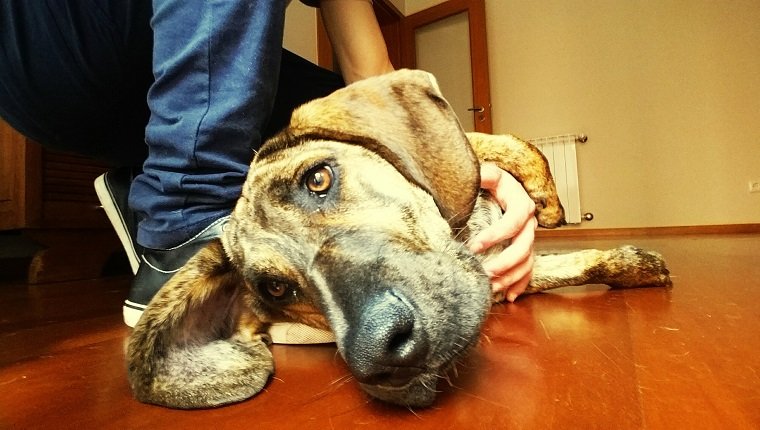Diazepam, sometimes known by the brand name Valium, is a drug that can be used in dogs as an anti-anxiety medication, a muscle relaxant, a treatment for seizures, and medicine for other conditions.
It works by promoting gamma-aminobutyric acid (GABA) in the dog’s brain, which blocks neurotransmitters that cause excitement.
Diazepam use can lead to side effects in dogs, especially after long-term exposure, and abruptly stopping use of the drug can cause withdrawal symptoms. Additionally, it can cause a negative reaction when mixed with certain medications.
You must always consult your veterinarian before using any medication for your dog. Here’s what you should know about the uses, dosage, and side effects of diazepam for dogs.
Uses For Diazepam In Dogs

Diazepam can be used to treat a variety of conditions in dogs, though some conditions are better treated naturally to reduce the risk of side effects. Certain lifestyle changes and behavioral therapy can help treat anxiety and stress, for example.
Still, diazepam is an option in cases where natural solutions fail.
Here are some conditions that diazepam may treat with veterinary approval:
- Anxiety, sometimes for stressful trips to the vet
- Seizures and epilepsy
- Muscle cramping disorders
- Irritable bowel syndrome
- Slipped disk
- Loss of appetite
- Conditions that require anesthesia
Dosage For Diazepam In Dogs

The prescribed dosage of diazepam for dogs varies based on the weight of the dog and the condition it is being used to treat. Therefore, you must always follow the instructions of your veterinarian to determine the exact dosage.
Usually it’s administered orally, though it can be injected intravenously in some cases. Rarely, it can be administered rectally or nasally.
The following is a guideline of what dosage you might expect your vet to prescribe based on the condition, but it should not replace the advice of a trained veterinarian:
- Anxiety: 0.12 to 1 mg per pound once per day as needed
- Seizures: 0.23 to 0.9 mg per pound, usually administered rectally
- For sedation: 0.11 mg per pound every 8 hours
- Muscle cramp disorders: 0.23 to 0.9 mg per pound every 8 hours
- Irritable bowel syndrome: 0.07 mg per pound every 8 hours
Side Effects Of Diazepam In Dogs

There are some common side effects of diazepam use in dogs. The risk of encountering these side effects increases with long term use, as does the risk of withdrawal symptoms if prolonged use is abruptly stopped.
Severe symptoms such as liver damage, anemia, and bruising or bleeding can also appear with extended exposure to the drug.
Here are some of the more typical side effects you might expect if you use diazepam for your dog:
- Sedation, reduced energy, and drowsiness
- Loss of coordination
- Aggression or changes in behavior
- Increased appetite
- Slow heart rate or breathing
- Vomiting
- Diarrhea
Diazepam can also interact poorly with other medications, including ordinary antacids, which is why your vet should always be aware of what other drugs your dog is taking.
Overdose can also lead to serious consequences such as confusion, delayed reflexes, and coma. In humans, overdose can lead to hypotension and cardiac arrest, though it is unknown how these rare cases may apply to dogs. Always follow your veterinarian’s guidelines.
There’s also a risk of allergic reaction, as with all medication. If you see the signs of allergic reaction or anaphylaxis, then you should contact your vet immediately. Diazepam should not be given to dogs who are pregnant or dogs who suffer from liver or kidney disease.
Have you ever treated your dog with diazepam or Valium? Would you recommend it? Then let us know in the comments below!





